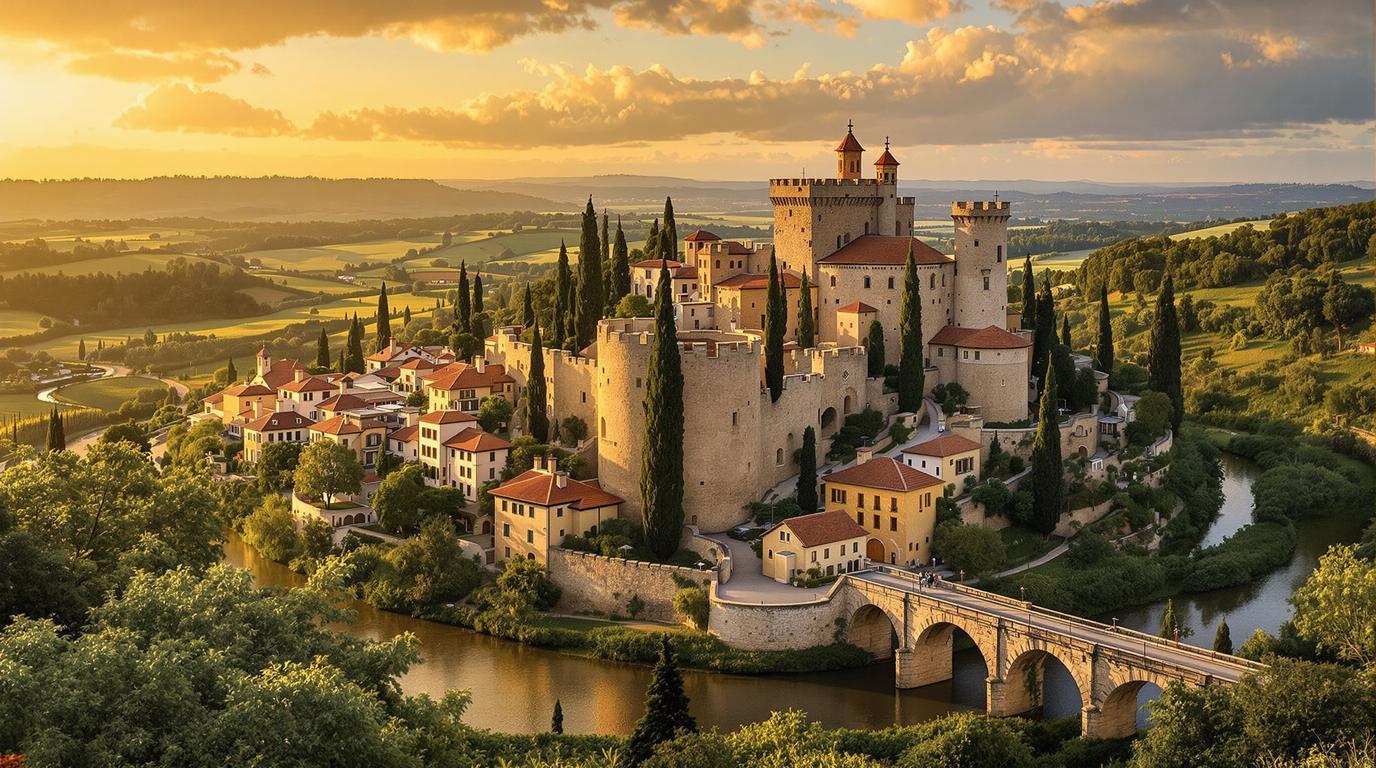The first time I visited Clisson, I couldn’t believe I was still in France. With its terracotta rooftops, Roman arches, and umbrella pines stretching skyward, this charming town in western France looked as if it had been plucked straight from Tuscany. What makes this 3,000-resident gem even more remarkable is how it masterfully blends Italian aesthetics with French heritage, creating one of Europe’s most unexpected cultural fusions.
A French town with an Italian soul
Clisson sits at the confluence of two rivers in the Loire-Atlantique department, just 30 minutes by train from Nantes. What sets it apart from countless other French villages is its dramatic architectural transformation in the early 19th century. After being devastated during the French Revolution, the town was rebuilt by the visionary Cacault brothers who had fallen in love with Tuscan design during their travels.
“Our town represents a unique moment in French history when Italian Renaissance aesthetics were deliberately transplanted onto French soil,” explains Marie Delatour, local historian and tour guide. “It’s not just architecture—it’s a cultural statement that has endured for centuries.”
Medieval might meets Mediterranean charm
The imposing Château de Clisson dominates the town’s skyline, its weathered stone walls contrasting beautifully with the Mediterranean-inspired buildings below. Dating back to the 13th century, this fortress offers panoramic views over the Sèvre Nantaise River and showcases the strategic importance Clisson once held. Unlike some of France’s more opulent châteaux, Clisson’s castle charms with its rugged authenticity.
The enchanted gardens of Garenne Lemot
Perhaps the most spectacular manifestation of Clisson’s Italian influence is found at the Domaine de la Garenne Lemot. This neo-Palladian villa surrounded by meticulously landscaped gardens creates a surreal pocket of Italy in western France. Umbrella pines, cypress trees, and classical statues transport visitors to the Roman countryside, while offering views of the medieval town below.
“I come here to sketch nearly every weekend,” shares local artist Jean Moreau. “The quality of light, the way it bathes the terracotta and stone at sunset—it’s reminiscent of those magical golden hours in Mediterranean villages.”
Metal meets medieval: The unexpected festival town
In a surprising cultural contrast, this picturesque town hosts Hellfest, one of Europe’s largest metal music festivals. Every June, over 180,000 black-clad music enthusiasts descend upon Clisson, creating a fascinating juxtaposition against the town’s delicate Italian aesthetics. Locals have embraced this duality, with many businesses and restaurants displaying metal memorabilia alongside traditional décor.
Wine country without the crowds
Clisson sits at the heart of Muscadet wine country, surrounded by vineyards producing crisp white wines that pair perfectly with the region’s seafood. Unlike some of France’s more famous culinary destinations, the wineries here remain refreshingly uncrowded, offering intimate tastings and direct conversations with winemakers.
A perfect weekend escape
For travelers looking to experience Clisson’s unique charm, the town makes an ideal weekend destination. The 15th-century covered market transforms into a vibrant hub every Friday morning, where locals shop for regional specialties like Curé Nantais cheese and ocean-fresh oysters. Riverside walks along the Sèvre Nantaise offer peaceful views of the town’s stone bridges and Italian-style villas.
While many travelers rush through Europe on high-speed trains, Clisson rewards those who slow down. This town isn’t about bucket-list attractions, but rather the joy of wandering medieval streets, sipping coffee in sun-drenched plazas, and discovering the unexpected blend of cultures that makes this place truly special.
As the evening sun casts long shadows across Clisson’s terracotta rooftops and the Château glows golden against the twilight sky, you might find yourself checking real estate listings. After all, who wouldn’t want to live in a slice of Italy in the heart of France?
